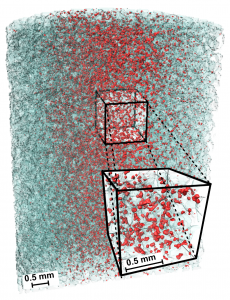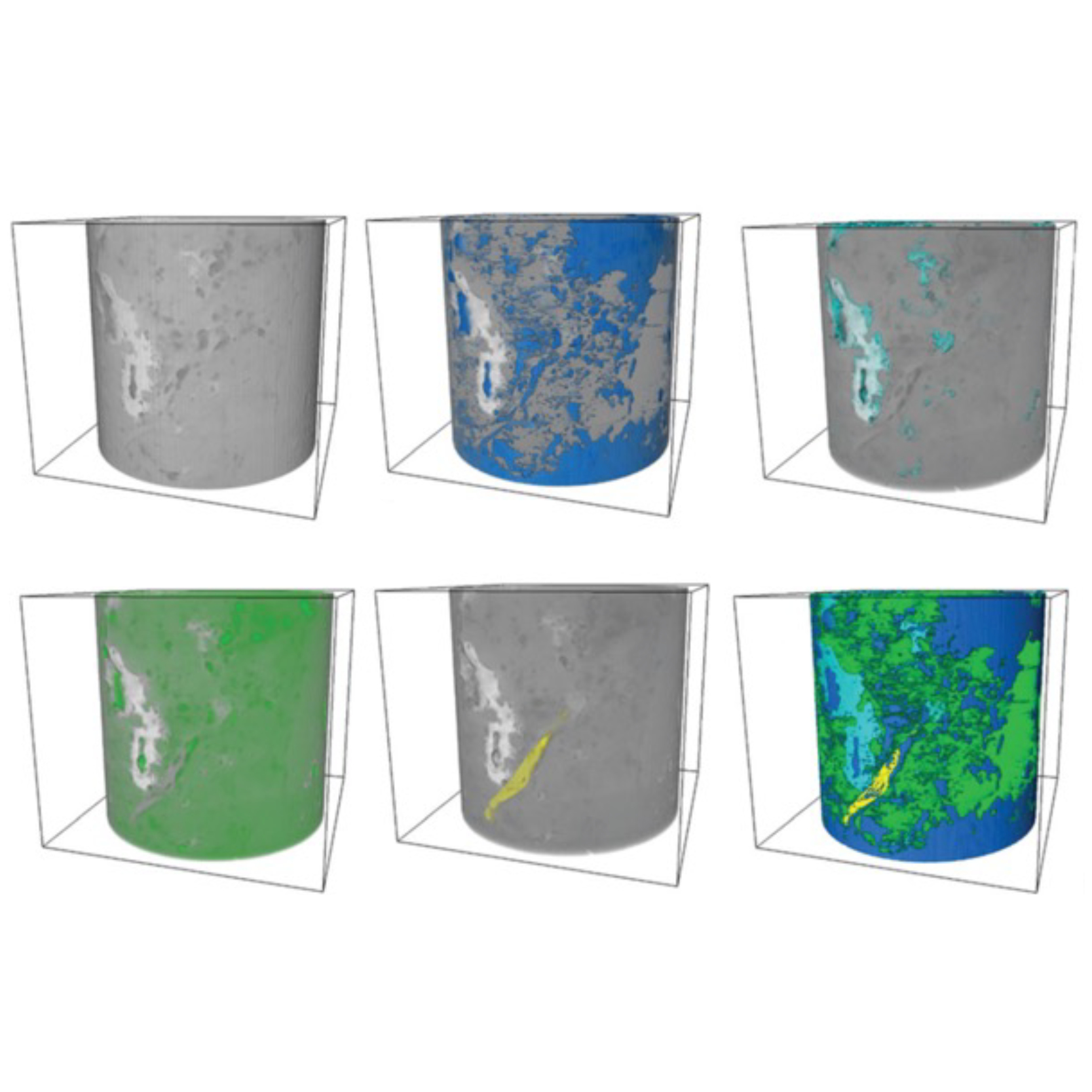
3D Microstructure of Soft Magnetic Elastomer Membrane
Soft magnetic elastomer membranes enable fast magnetic actuation under low fields. In our project, we… Read More
Events & Resources
News, Events and Resources from NXCT Partners
Large scale geological sequestration of CO2 is an essential component in tackling climate change. To limit warming to 2°C, we need an estimated 12,000 CO2 injection wells by 2050. At present, there are only 20 such projects worldwide.
Re-using decommissioned oil & gas reservoirs as carbon sequestration sites could be the answer, but only if injection wells can be sealed so that the CO2 remains trapped for thousands of years.
We see a controlled, enzyme induced carbonate precipitation (EICP) as a key tool for reducing the permeability of potential CO2 storage reservoirs. Specifically, EICP can seal leakage pathways such as cracks and defects in the well casing, cement lining, and rocks surrounding decommissioned oil, gas and CO2 wells. EICP treatment works because the fluids (water-based solutions containing urease enzyme, CaCl2, and urea) have much lower viscosity than traditional cement grouts, allowing widespread penetration. The fluids rapidly precipitate large amounts of the mineral calcite, filling in the pores and fractures that allow CO2 leakage.
We already know that calcite is effective at blocking the leakage pathways, and reducing permeability, but we need to understand the spatial and temporal dynamics of EICP if we are control the timing and location of precipitation and develop robust treatment strategies.
Using the high-speed, high-resolution NXCT capability we could capture the growth of the calcite (shown in red) in real reservoir rocks in 4D. Imaging with 5 minute intervals meant we could quantify where the calcite crystals first nucleated, the rate at which each grows, and enables investigating techniques that can delay or trigger precipitation in several types of porous media. The 4D data show calcite precipitation is extremely rapid and highly dependent on the both pore structure and fluid mixing processes.
“This is the first time we have been able to move away from pseudo-2D microfluidic chips and work in real rocks. Tracking how calcite precipitates in 4D inside real porous media has changed our understanding of enzyme induced carbonate precipitation and is leading to important new avenues of research. The data are currently being used to develop numerical models that will let us tailor EICP injection strategies and, ultimately, improve the long-term feasibility of carbon sequestration.”
Dr James Minto, Strathclyde Chancellor’s Fellow, Civil and Environmental Engineering at the University of Strathclyde



Soft magnetic elastomer membranes enable fast magnetic actuation under low fields. In our project, we… Read More

Nowadays, the increasing capability of micro-manufacturing processes enables the manufacture of miniature products with extremely… Read More

Injection of CO2 into shale reservoirs to enhance gas recovery and simultaneously sequester greenhouse… Read More